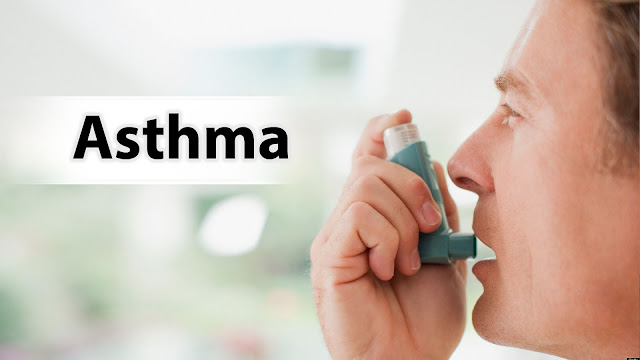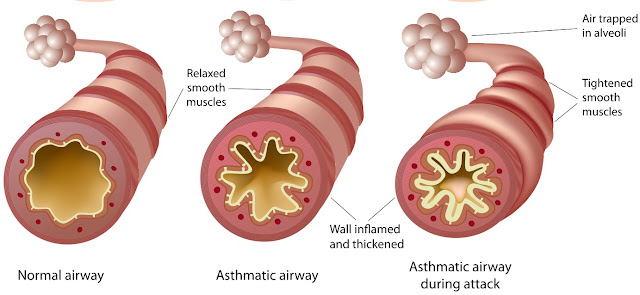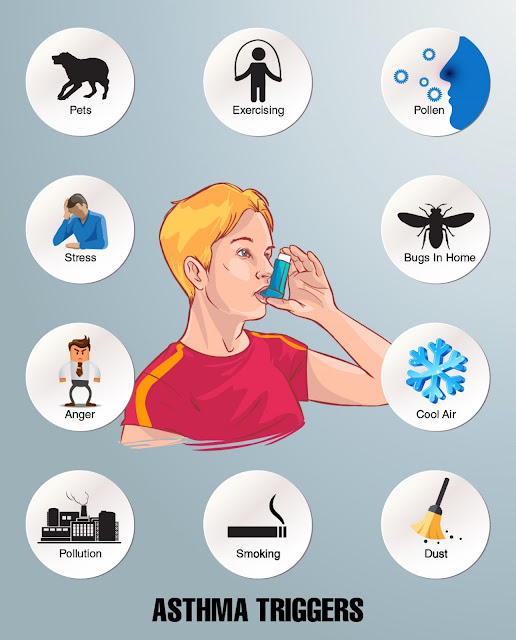Borderline personality disorder is also termed as EUPD-
Emotionally unstable personality disorder, emotional intensity disorder,
neurotic psychopathy. It is a mental disorder which impacts the way patient
think and feel about himself and others, resulting in problems in day to day
life.
In borderline personality disorder, patient have an intense fear
of separation, and patient unable to tolerate being alone. But his
inappropriate anger, frequent mood swings and impulsiveness may push his
relatives and friends away.
Borderline personality disorder usually starts in early
adulthood and is worse in young adulthood but it may get better gradually with
age.
Many people with BPD get better over the time with classical
Homeopathic treatment and can learn to have successful relationship, living
life satisfactorily.
Causes- The causes of border line personality disorder are not
fully recognized. BPD may be linked with environmental factors, history of child
neglect or abuse and other factors as given below:-
To know more information visit us: Top homeopathy doctor in Delhi
1. Genetics. Genetic family history
contribute to approx 40% BPD cases. Few studies suggest that it has strongly
associated with other mental condition among members of the same family.
2. Brain abnormalities. Few research shown
changes in certain location of brain involved in emotion regulation, aggression
and impulsivity. It also can be due to mal functioning of certain brain
chemicals which regulate mood, e.g. serotonin.
Borderline personality disorder’s signs and symptoms:
• Sense of identity is disturbed
• Patient has fear of abandonment,
and adopts extreme measures to avoid real or imagined abandonment.
• Thinking Black and white
• Dangerous behavior with
impulsivity, like gambling, driving recklessly, performing unsafe sexual
activities, binge eating, drug abuse, suddenly quitting a well settled job or
ending a healthy relationship.
• Disproportionate Intense emotional
reactions to the situation
• Unstable and chaotic inter
personal relationships, idealizing one moment and then suddenly believing the
person is cruel
• Abrupt behavior of self damaging
• Dissociation
• Self image distorted
• Self-damaging behavior
• Depression
• Anxiety
• Anger or rage
BPD patients are very sensitivity to rejection with fear of
possible abandonment. BPD features include sensitivity in patient’s
relationships with others, its very difficult for patient to regulate his
impulsivity and emotions. Patient is not sure of his own personal identity and
morals. Paranoid thoughts during mental stress with depersonalization and
dissociation.
Top Homeopathic Medicine For Borderline Personality
Disorder
Homeopathic treatment is very effective for treating borderline
personality Disorder without any side effects. In Classical Homeopathy
treatment medicine are selected on the basis of constitution, including both
mental and physical as totality, individuality of the patient is accessed. Few
important Homeopathy medicine are -
1. ANTIMONIUM
CRUDUM 200- Antimonioum Crudum is effective for patients of Borderline
Personality Disorder who have no desire to live, who remain sad with weeping,
have lost love for life and want to commit suicide.They are cross and
contractive , whatever is done fails to give satisfaction.
2. AURUM
METALLICUM 200-Aurum met. is an effective remedy for depression and self hatred
feeling in Borderline Personality Disorder. Aurummetallicum patients are very
serious people, strongly focused on work and achievement, who become depressed
if they feel they have failed in some way. Nervous breakdown.Thinks of
committing suicide but fears death greatly.Disgusted of life and
thoughts.Profound despondency.Peevish.Rapid and constant questioning without
waiting for answers. Oversensitive to noise.Discouragement, self – reproach,
humiliation and anger can lead to feelings of emptiness and worthlessness. The
person may feel worse at night with nightmares or insomnia.
3. CHAMOMILLA
200-- Chamomilla is one of the top medicines for patients of Borderline
Personality Disorder who easily get angry and quarrelsome without taking into
account the feelings of the other person. The sudden outbursts of anger because
of contradiction or when the feelings are hurt can be best managed by
Homeopathic medicine Chamomilla. remedy is also of great help to patients who
admit that they are unable to control their temper and those who want to do
everything as per their wish and get angry if their wish is not fulfilled. In
the childhood years the child wants something new in every minute and refuses
it when offered. There is fever, diarrhea or cough or convulsions due to anger.
4. BELLADONNA
200-Belladona is an effective medicine for controlling impulsive patients
who strike, bite and spit on the persons nearby with a red and hot face.
5. CROCUS
SATIVA 200-Crocus Sativus is an effective l Homeopathic medicine for
sudden mood changes in patients of Borderline Personality Disorder. The patient
has a sudden and frequent change in mood from extreme happiness to sadness. The
patient requiring Crocus Sativus is joyous and affectionate in a specific
moment and the very next moment unpredictably bursts out into anger. The
patient very soon feels sorry for this behavior.Anger with violence alternating
with fits of repentance.
6. IGNATIA
AMARA 200 - Ignatia Amara is another useful remedy for mood swings in
Borderline Personality Disorder patients who are of a sensitive nature and find
it very difficult to control their emotions. Their mood changes from laughing
to weeping and from happiness to sadness in quick succession in a very short
time.In Ignatia patients of Borderline Personality Disorder have a
history of some grief or disappointment in love affections prior to onset of
the disease . They are having unbearable anger and headache following anger.
7. LAC
CANINUM 200- Lac Caninum is effective for dealing with patients who feel
hopeless, have a low opinion of themselves and feel no one is a friend. Such
patients weep a lot and fear to be alone.
8. LILIUM
TIGRINUM 200- LiliumTigrinum is an effective remedy of great help for patients
of Borderline Personality Disorder who get aroused from even a slight emotional
excitement with palpitations of heart. Such patients are so irritable that they
cannot utter a decent word to anybody even if the other person speaks in the
mildest tone possible. The patients are known to sit for a long time thinking
about themselves and don’t want to be disturbed. They get extremely irritated
if disturbed and run away and even forcefully shut the doors.They fears that
they are having some organic and incurable disease , so aimless and do things
in an hurried manner, always keep busy.
9. MOSCHUS
200-Moschus is another effective medicine that is very beneficial in
dealing with the sudden outbursts of anger in patients of Borderline Personality
Disorder. The patients have sudden fits of anger and even scold others till
their face turns blue and they faint and fall down. The sudden outbursts of
anger are accompanied by trembling and uncontrollable laughter. Moschus is
also a effective remedy for obstinate and self-willed persons who
right from their childhood have the habit of getting each and every demand
fulfilled by hook or by crook. This habit continues in advancing years and
outbursts of anger increase in intensity if their desire or demand is not met.
10. NUX
VOMICA 200-NuxVomica is the top Homeopathic medicine to deal with
impulsive behaviour of Borderline Personality Disorder patients who are
sensitive and want to force things according to will. If opposed, such patients
have violent destructive impulses like an impulse in a woman to destroy her
husband, to tear things and to throw her child. NuxVomica patients
cannot even bear a chair to come in their way while walking and if such a
situation arises, they just kick it to clear the way.They are very irritable
and sensitive to all impressions.
11. HEPAR
SULPH 200-Hepar sulph is another remedy of great help in controlling
impulsive behaviour in Borderline Personality Disorder patients . These patient
get disturbed easily with violent impulse to kill even the best friend, to put
things on fire without any cause.The slightest issue irritates him.
12. SEPIA
200-Sepia is an excellent Homeopathic medicine for patients of Borderline
Personality Disorder who get irritated over no reason and feel sad. Such
patients have an aversion to talk along with irritability. Only their own
opinion matters for such patients and they cannot bear to be opposed. They are
indifferent to family and whom she loves best and aversion to any
work, be it mental or physical.
13. STRAMONIUM
200-Stramonium is another remedy for impulsiveness when a patient tears
clothes, curses and indulges in excessive screaming till the voice is lost. The
condition gets worse in darkness, the patient likes light and company.
14. STAPHYSAGRIA
200—Staphysagria have a tendency towards destructiveness in Borderline
Personality Disorder . This Homeopathic medicine is the best medicine for
patients who control their anger but there after they become very destructive
and violent and start throwing things.
15. VALERIANA
200 -- Valeriana is also very effective for dealing with sudden mood
swings in patients of Borderline Personality Disorder who are excited easily
with trembling and palpitations. The patients experience mood swings especially
when resting and at night and feel better by walking. Hallucinations at night.
The patient is very irritable.
























